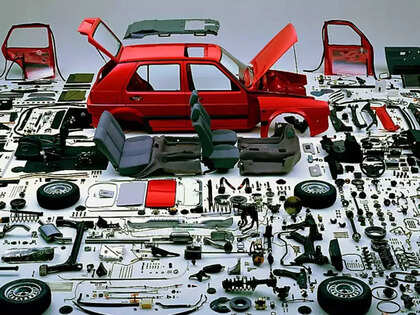NITI Aayog’s Report on Strengthening India’s Automotive Sector
Recently, NITI Aayog revealed a very important report titled “Automotive Industry – Powering India’s Participation in Global Value Chains”. This report outlines the current landscape of India’s automotive sector, identifies challenges, and proposes strategies to enhance India’s role in global markets.
Global and Indian Automotive Landscape
In 2023, global automobile production reached around 94 million units. The automotive components market was valued at USD 2 trillion. India ranks as the fourth-largest automobile producer globally, producing nearly 6 million vehicles annually. The sector has a strong presence in both domestic and export markets, particularly in small cars and utility vehicles. Initiatives like ‘Make in India’ contribute to India’s competitive advantage.
Emerging Trends in the Automotive Sector
The industry is shifting towards electric vehicles (EVs), driven by consumer demand for sustainable options and regulatory pressures. Global EV sales are increasing, reshaping manufacturing dynamics. Battery production hubs are emerging in Europe and the U.S., creating investment opportunities in lithium and cobalt mining. Additionally, Industry 4.0 technologies such as AI, ML, IoT, and robotics are revolutionising manufacturing processes, enhancing productivity and flexibility.
Challenges Facing India’s Automotive Sector
Despite being a major producer, India holds only a 3% share in the global automotive component trade, valued at approximately $20 billion. Key challenges include high operational costs, infrastructural deficits, low integration into global value chains, and insufficient R&D investment. India’s share in high-precision segments remains low, hindering competitiveness.
Proposed Interventions for Growth
NITI Aayog’s report suggests several interventions to boost India’s global competitiveness. These include:
- Fiscal Interventions
- Operational Expenditure Support for scaling manufacturing.
- Skill Development initiatives to build a skilled workforce.
- R&D incentives and support for international branding to enhance product differentiation.
- Cluster Development to promote collaboration among firms.
- Non-Fiscal Interventions
- Encouraging Industry 4.0 adoption for improved efficiency.
- Promoting international collaborations and free trade agreements.
- Simplifying regulatory processes to enhance the ease of doing business.
Vision for 2030
NITI Aayog envisions a robust automotive sector by 2030. The goal is to increase automotive component production to $145 billion and triple exports from $20 billion to $60 billion. This growth aims to create a trade surplus of around $25 billion and raise India’s global value chain share from 3% to 8%. The sector is expected to generate 2-2.5 million new jobs, bringing total employment to 3-4 million.
Month: Current Affairs - April, 2025
Category: Reports & Indexes Current Affairs








